| |
|
Xiamen Oil Paintings, Wholesale Direct!
|
|
100% hand painted, 100% cotton canvas, 100% money back if not satisfaction. |
|
|
|
|
ART WORKS INDEX
A
B
C
D
E
F
G
H
I
J
K
L
M
N
O
P
Q
R
S
T
U
V
W
X
Y
Z
|
|
ARTISTS INDEX
A
B
C
D
E
F
G
H
I
J
K
L
M
N
O
P
Q
R
S
T
U
V
W
X
Y
Z
|
|
|
|
|
|
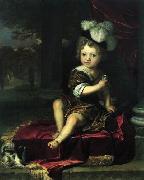 |
Carel de Moor
|
|
(February 25, 1655 - February 16, 1738) was a Dutch Golden Age etcher and painter. He was a pupil of Gerard Dou.
Carel de Moor was born in Leiden. According to Houbraken, his father was an art dealer who wanted him to study languages and only allowed him to study art when his talent for drawing surfaced at a young age. Houbraken met him in person at the atelier of Godfried Schalcken when he was completing his education there. According to the RKD he was the son of a Leiden painter of the same name and a pupil of Dou, Frans van Mieris, Godfried Schalcken, and Abraham van den Tempel. He became a member of the Leiden Guild of St. Luke in 1683, and became deacon many times over in the years 1688-1711. His own pupils later were Pieter Lyonet, Andrei Matveev, Arent Pijl, Arnout Rentinck, and Mattheus Verheyden.
|
|
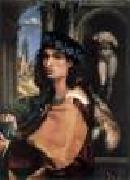 |
CAPRIOLO, Domenico
|
|
Italian painter, Venetian school (b. 1494, Venezia, d. 1528, Treviso)
Italian painter. He moved from Venice to Treviso c. 1517, where he is well documented (though there is little about his painting). In 1518-19 he married Camilla, daughter of the painter Pier Maria Pennacchi. A coherent body of work executed between 1518 and 1528 has been reconstructed. Capriolo's first secure work, the Adoration of the Shepherds (Treviso, Mus. Civ.), signed and dated 1518, has a formal structure reminiscent of the late style of Giovanni Bellini, with the broader chromatic range of Palma Vecchio and a crepuscular light that recalls the Venetian works of Giovanni Girolamo Savoldo or Giovanni da Asola ( fl 1512-31). The Assumption in Treviso Cathedral, commissioned in 1520, shows, in its spiralling movement, the influence of the contemporary frescoes of Pordenone in the nearby Malchiostro Chapel. In the Legend of the Doubting Midwife (Treviso, Mus. Civ.), signed and dated 1524, the influence of Savoldo is greater than that of Palma. This is also apparent in the altarpiece of the parish church of Ponzano Veneto (Treviso), dated 1525. The portrait of Lelio Torelli (Barnard Castle, Bowes Mus.), signed and dated 1528, Capriolo's last known work, seems by contrast to reflect local models of portraiture and lies somewhere between the styles of Sebastiano Florigerio and Bernardino Licinio. Other works assigned to Capriolo include: the altarpieces of the parish churches of Cavasagra and Spercenigo, near Treviso; the Adoration of the Shepherds in the sacristy of Serravalle Cathedral at Vittorio Veneto; a fragment of a Nativity (Venice, Mus. Correr); two paintings of the Virgin and Child with Saints (Bucharest, Mus. A.; Conegliano, Mus. Civ. Castello).
|
|
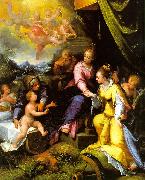 |
Calvaert, Denys
|
|
Flemish, 1540-1619
Flemish painter and draughtsman, active in Italy. In 1556-7 he was inscribed in the registers of the painters' corporation in Antwerp as a pupil of the landscape painter Kerstiaen van Queboorn (1515-78). Calvaert went to Bologna c. 1560, where he was to remain for the rest of his life. There he came under the protection of the influential Bolognini family and entered the workshop of Prospero Fontana the elder. After about two years he left Fontana to work with Lorenzo Sabatini, with whom he collaborated on several pictures, including the Holy Family with the Archangel St Michael (Bologna, S Giacomo Maggiore) and an Assumption (Bologna, Pin. N.). Calvaert's oeuvre is composed almost exclusively of religious works, ranging in size from vast altarpieces to small devotional pictures on copper. This sets him apart from other Netherlandish painters, notably those of the school of Prague, for whom Classical mythology was a constant source of inspiration. His first signed and dated work was Vigilance (1568; Bologna, Pin. N.); thereafter he developed a more original style, as in the Noli me tangere (Bologna, Pin. N.).
|
|
 |
Cagnaccio di San Pietro
|
|
Italian, 1897-1946,born Natale Bentivoglio Scarpa, was an Italian magic realist painter. He had his artistic training at the Academy of Fine Art in Venice, where he studied under Ettore Tito. Cagnaccio's early paintings were in a Futurist idiom, but by the early 1920s he had adopted a very smoothly brushed, nearly photographic style. His work, which includes portraits, nudes, still lifes, scenes of popular life, and religious pictures, shows the influence of the German painters of the New Objectivity. One of his best-known paintings, After the Orgy (1928) shows three nude women asleep on a floor littered with wine bottles, playing cards and cigarettes.
|
|
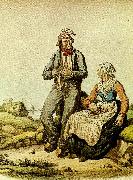 |
c. a. dahlstrom
|
|
Carl Petter Dahlström, född ca 1705, död 4 mars 1794, var en svensk möbelsnickare. Dahlström gesällvandrade 1745?C1755 i Nordeuropa och Frankrike, där han i Paris kom i lära hos den tidens främste ebenist Jean-François Oeben. Hos denne lärde sig Dahlström faneringstekniken marqueterie ?? fleurs eller blomsterintarsia, som var en metod för att möta rokokons krav på fanering av dubbelvälvda kroppar. Mycket tack vare rekommendationer av C.J. Cronstedt blev Dahlström efter hemkomsten till Sverige utnämnd till kunglig ebenist den 19 november 1756. Han finns representerad på Nationalmuseum med en byrå som han tillverkade tillsammans med Lorentz Nordin. Dahlström överlämnade 1769 sina privilegier till Niclas Palmgren och ägnade sig därefter åt restaurangverksamhet.
|
|
|
|
 |
BRAY, Dirck
|
|
Dutch painter, Haarlem school (active 1651-1678)
|
|
|
|
|
|
|
|
|
|
|
|
 |
Blythe David Gilmour
|
|
American Painter, 1815-1865
He began his career as an itinerant portrait painter in the early 1840s and became one of the leading satirical artists in America by the beginning of the Civil War. Self-taught, from 1840 to 1850 he worked in East Liverpool, OH, and Uniontown, PA, and nearby towns and villages, painting rather stiff likenesses of the local gentry. He also carved a monumental polychrome wooden statue of Marie-Joseph, Marquis de Lafayette for the Uniontown courthouse and painted a landscape panorama of the Allegheny mountains, which he took on tour through Maryland, Pennsylvania and Ohio.
|
|
|
|
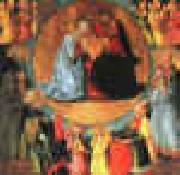 |
Bicci, Neri di
|
|
Italian Early Renaissance Painter, 1419-1491
was an Italian painter of the Renaissance. A prolific painter of mainly religious themes, he was active mainly in Florence and in the medium of tempera. His father was Bicci di Lorenzo (1373-1452). His grandfather, Lorenzo di Bicci (c. 1350-1427) was also a painter in Florence, a pupil of Spinello Aretino. He painted a St. Giovanni Gualberto enthroned, with ten Saints for the church of San Pancrazio. His journals from the years 1453-1475,
|
|
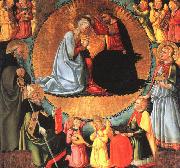 |
Bicci Di Neri
|
|
(1419-1491) was an Italian painter of the Renaissance. A prolific painter of mainly religious themes, he was active mainly in Florence and in the medium of tempera. His father was Bicci di Lorenzo. His grandfather, Lorenzo di Bicci was also a painter in Florence, a pupil of Spinello Aretino.
Neri di Bicci's main works include a St. John Gualbert Enthroned, with Ten Saints for the church of Santa Trinita, an Annunciation (1464) in the Florentine Academy, two altarpieces in the Diocesan Museum of San Miniato, a Madonna with Child Enthroned in the Pinacoteca Nazionale of Siena, and a Coronation of the Virgin (1472) in the abbey church at San Pietro a Ruoti (Bucine. He also painter numerous works in the area of Volterra.
His journals from the years 1453-1475, including the rates of remuneration for his work, are still preserved in the library of the Uffizi Gallery. They are known as Ricordanze.
|
|
 |
Bicci di Lorenzo
|
|
Italian, 1373-1452,was an Italian painter and sculptor, active in Florence. He was born in Florence in 1373, the son of the painter, Lorenzo di Bicci, whose workshop he joined. He married in 1418, and in 1424 was registered in the Guild of Painters at Florence. His son, Neri di Bicci was also a painter and took over the family workshop. Bicci di Lorenzo died in Florence in 1452 and was buried in Santa Maria del Carmine. Following early work - largely frescoes - in collaboration with his father, he received a number of important commissions, including, according to Vasari, from the Medici for a cycle of frescoes of Illustrious Men for the Palazzo Medici. For the Opera del Duomo, he painted frescoes of the apostles. And he painted a Saints Cosmas and Damian and frescoes representing the dedication of the church itself for Sant'Egidio in the hospital of Santa Maria Nuova. His best paintings are now thought to be the Madonna in Trono now in the National Gallery at Parma, the Three stories of St Nicholas triptych in the cathedral of Fiesole, and a Nativity in the church of San Giovannino dei Cavalieri in Florence.
|
|
 |
Bernardo Daddi
|
|
active in Florence 1320-1348
was an early Italian renaissance painter and apprentice of Giotto. He was also influenced by the Sienese art of Lorenzetti. Daddi's birth date remains unknown. He is first mentioned in 1312. He focused on religious motifs and altarpieces. A triptych he painted in 1328 is in the Uffizi, and there are several panels in National Gallery of Art and the Walters Art Gallery. Daddi became the leading painter of Florence during his generation. His last work dates from 1347,
|
|
 |
Bernaert de Ryckere
|
|
Bernaert de Rijckere (c1535, Kortrijk - 1590, Antwerp), was a Flemish Renaissance painter.
According to Karel van Mander he was born in Kortrijk and was admired there for an altarpiece depicting Christ bearing the cross, which he made for the St. Marten's church of the brothers of the Cross there. He later took on a different style that Karel van Mander had heard of but had not seen to be able to judge it for himself. He said he moved to Antwerp and joined the Guild of St. Luke there in 1561.
According to the Netherlands Institute for Art History he was the teacher of his son, the painter Abraham de Rijcke, and is known for landscapes and historical allegories.
|
|
|
|
 |
Benjamin Duterrau
|
|
1767 - 1851 , was an artist in England and in early colonial Australia. Duterrau was was born in London to parents of French descent. Duterrau was apprenticed to an engraver and in 1790 did two coloured stipple engravings after Morland, The Farmer's Door and The Squire's Door. Taking up painting, between 1817 and 1823 he exhibited six portraits at Royal Academy exhibitions, and he also exhibited three genre pieces at the British Institution about the same period. Duterrau emigrated to Van Diemen's Land (now Tasmania), arriving in August 1832 with his daughter. He lived at the corner of Campbell and Patrick Streets in Hobart, and practised as a portrait painter. In 1835 he did some etchings of Indigenous Australians, the first examples of that craft to be done in Australia. His most famous painting The Conciliation is in the Hobart gallery with a self-portrait and other works, including some modelling in relief. A large landscape is in the Beattie collection at Launceston, and he is also represented in the Dixson collection at Sydney. Duterrau died at Hobart in 1851.
|
|
 |
BECCAFUMI, Domenico
|
|
Italian Mannerist Painter, ca.1486-1551
Domenico was born in Montaperti, near Siena, the son of Giacomo di Pace, a peasant who worked on the estate of Lorenzo Beccafumi. Seeing his talent for drawing, Lorenzo adopted him, and commended him to learn painting from Mechero, a lesser Sienese artist.[1] In 1509 he traveled to Rome, but soon returned to Siena, and while the Roman forays of two Sienese artists of roughly his generation (Il Sodoma and Peruzzi) had imbued them with elements of the Umbrian-Florentine Classical style, Beccafumi's style remains, in striking ways, provincial. In Siena, he painted religious pieces for churches and of mythological decorations for private patrons, only mildly influenced by the gestured Mannerist trends dominating the neighboring Florentine school. There are medieval eccentricities, sometimes phantasmagoric, superfluous emotional detail and a misty non-linear, often jagged quality to his drawings, with primal tonality to his coloration that separates him from the classic Roman masters.
|
|
 |
Bastiano da Sangallo
|
|
(1481 - May 31, 1551) was an Italian sculptor and painter of the Renaissance period, active mainly in Tuscany. He was a nephew of Giuliano da Sangallo and Antonio da Sangallo the Elder. He is usually known as Aristotile, a nickname he received from his air of sententious gravity. He was at first a pupil of Perugino, but afterwards became a follower of Michelangelo. Mentioned by Vasari as one who made a small copy of the Cartoon of Michelangelo Battle of Cascina (1506).
|
|
 |
BARTOLOMEO DI GIOVANNI
|
|
Italian Early Renaissance Painter, active 1475-1511
Bartolomeo di Giovanni, also known as Bartolommeo di Giovanni and as Alunno di Domenico, was an early renaissance Italian painter of the Florentine School who was active from about 1480 until his death in 1501. He studied with and assisted Domenico Ghirlandaio, painting the predella of Ghirlandaio's Adoration of the Magi in the Ospedale degli Innocenti (Foundling Hospital) in Florence, in 1488. Bartolomeo di Giovanni also worked under the guidance of Sandro Botticelli.
|
|
 |
bartolomeo della gatta
|
|
(1448 -1502), born Pietro di Antonio Dei, was an Italian (Florentine) painter, illuminator, and architect. He was the son of a goldsmith. He was a colleague of Fra Bartolommeo. In 1468, Bartolomeo became a monk in the Order of Camaldoli, probably in the Church of Santa Maria degli Angeli in Florence, which his brother Nicolo had already entered. Upon taking holy orders, he changed his name to Bartolomeo. About 1481, he was summoned to Rome where he contributed to the cycle of frescos on the walls of the Sistine Chapel. Bartolomeo eventually became Abbot of San Clemente in Arezzo. He died in 1502 and was buried in the Abbey of San Clemente.
|
|
 |
Bartolo di Fredi
|
|
Italian Gothic Era Painter, ca.1330-1410
He had a large studio and was one of the most influential painters working in Siena and the surrounding towns in the second half of the fourteenth century. He registered in the Guild of that city in 1355; he had several children, who all died before him, with the exception of Andrea Bartoli. He was the companion of Andrea Vanni from 1353, and helped decorate the Hall of Council at Siena, in 1361. In 1362 he went to San Gimignano, where, by 1356, he had painted the entire side of the left aisle of the Pieve with scenes drawn from the Old Testament. In 1366 the Council of the city of Gimignano ordered a painting, representing Two Monks of the Augustine Order to be placed in the Palazzo Pubblico, in order to commemorate the settlement of some disputes which had long existed between that order and the city. In the early part of 1367 he returned to Siena, and was employed with Giacomo di Mino in the decorations of the cathedral. In 1372 he rose to a position in the government of the city, and was sent to welcome the new Podesta, on his approach to Siena. In 1381 he was himself made a member of the Council, and in 1382 he executed the Descent from the Cross now in the Sacristy of San Francesco, Montalcino. The same church also possesses panels painted by him containing the Baptism of Christ figures of SS. Peter, Paul, and Francis, and five scenes from the life of St. Philip of Montalcino. In 1389, Bartolo, assisted by Luca Thome, painted the altar-piece for the Shoemakers Company, in the Cathedral, and continued from that year until his death to furnish altar-pieces for the cathedral and other churches of Siena, which have now all disappeared.
His style is marked by the rejection of the concrete figures associated with Pietro Lorenzetti to instead favor flatter decorative otherworldly compositions in the manner of Simone Martini and Duccio. He combined a spirit of fantasy with anecdotal details.
The Honolulu Academy of Arts, the Los Angeles County Museum of Art, the Louvre, the Metropolitan Museum of Art, the Mus??e des Beaux-Arts (Chambery, France), the Musee du Petit Palais (Avignon, France), Museo Civico e Diocesano d Arte Sacra (Montalcinothe, Italy), the Museum of Fine Arts, Boston and the University of Virginia Art Museum are among the public collections having paintings by Bartolo di Fredi.
|
|
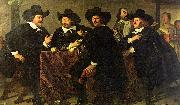 |
Bartholomeus van der Helst
|
|
1613-1670
Dutch
Bartholomeus Van Der Helst Galleries
Dutch painter. He was the son of a Haarlem inn-keeper and presumably undertook part or all of his training in Amsterdam. His earliest works suggest that the painter Nicolaes Eliasz. Pickenoy was his master. Although van der Helst had probably already established himself as an independent master by the time he married Anna du Pire in Amsterdam in 1636, his earliest known work, a portrait of The Regents of the Walloon Orphanage, Amsterdam (Amsterdam, Maison Descartes), dates from 1637. Stylistically it is close to the work of Pickenoy. His portrait of a Protestant Minister of 1638 (Rotterdam, Boymans-van Beuningen) reveals the influence of Rembrandt. The young artist must have risen rapidly to fame in Amsterdam, for as early as 1639 he received the prestigious commission for a large painting for the Kloveniersdoelen (Arquebusiers or Musketeers Hall): The Civic Guard Company of Capt. Roelof Bicker and Lt Jan Michielsz. Blaeuw (Amsterdam, Rijksmus.), which formed part of the same series as Rembrandt Night Watch (Amsterdam, Rijksmus.). Van der Helst may not have completed this commission until 1642 or 1643. The ingenious arrangement of the figures in a broad composition shows the artist special talent for composing large groups. Pickenoy influence is less noticeable here than in the portrait of 1637; the self-assured poses of the individual figures were to become a characteristic feature of van der Helst work. The successful execution of this portrait established van der Helst reputation: from 1642, when he began to receive an increasing number of commissions for individual portraits, until 1670 he was the leading portrait painter of the ruling class in Amsterdam. From 1642 his technique in portrait painting gradually became more fluent and the rendering of costume materials more detailed. Some typical portraits of his earlier period are those of Andries Bicker (Amsterdam, Rijksmus.), his wife Catharina Gansneb Tengnagel (Dresden, Gemeldegal. Alte Meister) and their son Gerard Bicker (Amsterdam, Rijksmus.), all of 1642, and the Portrait of a Young Girl (1645; London, N.G.). In 1648 van der Helst painted a second civic guard portrait, The Celebration of the Peace of M?nster at the Crossbowmen Headquarters, Amsterdam (Amsterdam, Rijksmus.), a superbly composed and well painted portrait that, until the late 19th century, was considered one of the masterpieces of the Golden Age but later lost popularity because of its smooth and modish execution. It can nevertheless still be regarded as one of the most important group portraits of the 17th century. Its technical perfection, characterized by a well-modelled rendering of the figures and a smooth handling of the brush, dominated the rest of van der Helst oeuvre.
|
|
 |
BARRA, Didier
|
|
French painter (b. 1590, Metz, d. 1644, Napoli
French painter, active in Italy. He was for a long time confused with FRAN?OIS DE NOM?, and the work of both artists was thought to be by a Mons? Desiderio, a 'highly praised painter of perspectives and city scenes' (de Dominici). It is now generally accepted that Mons? Desiderio was the pseudonym of Didier Barra (1982 exh. cat.), son of Cl?ment Barra. Didier Barra left Metz probably c. 1608, when his name appeared for the last time in the city archives. From c. 1630 he was active in Naples, where he came into contact with landscape and townscape painters from northern Europe. De Dominici wrote that he was associated with Belisario Corenzio. The point of departure in reconstructing Barra's oeuvre is the Panoramic View of Naples (Naples, Mus. N. S Martino), which is signed and dated Desiderius Barra ex civitate Methensi in Lotharingia, F. 1647. The picture is a precise and panoramic view of Naples from the sea, from a single viewpoint, enriched by lively brushwork and with spirited scenes of shipping in the foreground. Its topographical precision suggests that Barra was influenced by the engravings of large views of Naples made by Alessandro Baratta ( fl 1629-30), and he may himself have trained as a cartographer. On the basis of this picture, several views of Naples have been attributed to Barra.
|
|
 |
Barnaba Da Modena
|
|
active in Genoa and Pisa 1361-1383
was an Italian painter of the mid-14th century Lombardy. There is a painting by him in the church of San Francesco in Alba. A Virgin and Child once in Frankfort, was painted in a Byzantine style and is currently located at the Museum of Fine Arts in Boston,
|
|
 |
Barna da Siena
|
|
Italian Painter, active ca.1350
Barna da Siena, also known as Barna di Siena, was a Sienese painter active from about 1330 to 1350, and was the painter in Siena during this period. He learned his trade from Simone Martini. Barna is believed to have paint the frescoes depicting the life of Jesus in the Collegiata di San Gimignano and is generally credited with Christ Bearing the Cross, with a Dominican Friar in the Frick Collection in New York City. He was killed in a fall from the scaffolding. Barna's figures are more dramatic and vigorous than any in previous Sienese painting.
|
|
 |
BARBARI, Jacopo de
|
|
Italian Early Renaissance Painter, ca.1440-1515
Italian painter and printmaker. He was the first Italian Renaissance artist of note who travelled to the courts of Germany and the Netherlands. His earliest known works appear to date from the late 1490s, suggesting that he was born c. 1460-70. The birthdate of c. 1440 traditionally assigned to him reflects the misinterpretation of a document of 1512 in which his patron, Margaret of Austria, Regent of the Netherlands, awarded him a stipend because of his 'weakness and old age'. In fact, at this date a man could be described as 'old' while in his fifties or even younger.
|
|
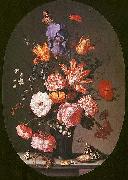 |
Balthasar van der Ast
|
|
(1593/94 - 1657) was a Dutch Golden Age painter who specialized in still lifes of flowers and fruit, as well as painting a number of remarkable shell still lifes; he is considered to be a pioneer in the genre of shell painting. His still lifes often contain insects and lizards. He was born in Middelburg and died at Delft.
|
|
 |
Balthasar Denner
|
|
(15 November 1685 in Altona - 14 April 1749 in Rostock) was a German painter, highly-regarded as a portraitist. He painted mostly half-length and head-and-shoulders portraits and a few group portraits of families in interiors. Usually Denner concentrated on the face; clothes and paraphernalia were done by other painters or later his daughter.
|
|
|
|
 |
BACKER, Jacob de
|
|
Flemish painter (b. 1555/60, Antwerpen, d. 1585/90, Antwerpen)
Flemish painter and draughtsman. According to van Mander, as a young boy de Backer was abandoned by his father, also a painter, who had to flee Antwerp because of an impending court trial. Jacob then worked for several years in the studio of Antonio van Palermo (1503/13-before 1589) and later entered the workshop of Hendrick van Steenwijck. Van Mander further claimed that the strenuous labour that van Palermo had imposed on the young man had so wrecked his health that he died at the age of 30, in the arms of his former master's daughter. This, van Mander added, happened a long time ago, thus implying that de Backer died before van Steenwijck left Antwerp in 1586. This is confirmed by other evidence, including the age of van Palermo's daughter Lucretia, who was baptized in Antwerp on 25 July 1561. She lived until 1626 and at the time of her death still possessed six paintings by de Backer.
|
|
 |
BABUREN, Dirck van
|
|
Dutch Baroque Era Painter, 1595-1624
1624). Dutch painter. His father, Jasper van Baburen (d ?1599), had been in the service of Geertruijd van Bronckhorst van Battenburg, Baroness (vrijvrouw) of Vianen, Viscountess (burggravin) of Utrecht, and thus Dirck must have received a better than average education, a fact at least partially confirmed by the innovative and often literary nature of his subject-matter. In 1611 he is recorded as a pupil of the portrait and history painter Paulus Moreelse in Utrecht. It is likely that this was the last year of his apprenticeship. Van Baburen probably left for Italy shortly after 1611, for a document rediscovered in the late 1980s records a signed and dated altarpiece of the Martyrdom of St Sebastian (1615; untraced), executed for a church in Parma. His most important pictures made in Italy were painted in collaboration with David de Haen (d 1622) for the Piet? Chapel of S Pietro in Montorio, Rome, which was decorated between 1615 and 1620. Van Baburen's paintings for the chapel were mentioned by Giulio Mancini in his manuscript notes, Considerazioni sulla pittura (c. 1619-20); there Mancini claims the artist was 22 or 23 years old when he carried out the commission. One of his best-known works, the Entombment (formerly dated 1617), is still in situ on the altar of the chapel. This much-copied composition reveals van Baburen's close study of Caravaggio's famous Entombment (Rome, Pin. Vaticana). In 1619 and the spring of 1620 van Baburen and de Haen were recorded as living in the same house in the Roman parish of S Andrea delle Fratte. Caravaggio's close follower and presumed student, Bartolomeo Manfredi, was living in the same parish in 1619. Van Baburen must have known the works of Manfredi.
|
|
|
|
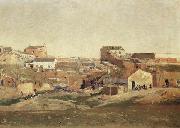 |
Aureliano De Beruete Y Moret
|
|
Spanish , Madrid, 1845 - Madrid, 1912
Spanish writer, painter and collector. After pursuing a political career and taking a doctorate in civil and canon law, he dedicated himself to writing on art and produced important studies on Diego Velezquez (1898), Joaqu'n Sorolla y Bastida (1901) and other artists. He travelled extensively and enthusiastically in Europe (France, Belgium, Switzerland, the Netherlands, Italy, Germany, England and elsewhere), studying especially the different national schools of painting. On his travels he also painted landscapes. After working for some time as a copyist in the Museo del Prado, Beruete decided in 1873 to concentrate his efforts on painting and on learning to perfect his craft. He enrolled at the Escuela Superior de Bellas Artes de S Fernando in Madrid and also studied at the studio of Carlos de Haes. Beruete was among the founders of the Instituci'n Libre de Enseeanza, and with its members, and with Carlos de Haes, he made several study trips abroad. In Paris he came to know the painting of the Barbizon school, and in Belgium he assimilated the teaching of the generation of landscape artists who had adopted a form of Realism.
|
|
|
|
|
|
|
|
|
|
|
|
|
|
 |
AST, Balthasar van der
|
|
Dutch Baroque Era Painter, ca.1593-1656
1657). Dutch painter. He was the brother-in-law of Ambrosius Bosschaert (i), whose household he entered in 1609, after the death of his father. He remained as Bosschaert's pupil, until he was 21. In 1615 van der Ast moved with the Bosschaert family to Bergen-op-Zoom. However, a year later the Bosschaerts were living in Utrecht, but van der Ast is not recorded there until 1619, when he was entered as a master in the Guild of St Luke. He remained in Utrecht until 1632, then lived in Delft, where he enrolled in the painters' guild on 22 June 1632. On 26 February 1633 he married Margrieta Jans van Bueren in Delft, where he spent the rest of his career; the marriage produced two children.
|
|
 |
Asher Brown Durand
|
|
1796-1886
Asher Brown Durand Galleries
His interest shifted from engraving to oil painting around 1830 with the encouragement of his patron, Luman Reed. In 1837, he accompanied his friend Thomas Cole on a sketching expedition to Schroon Lake in the Adirondacks and soon after he began to concentrate on landscape painting. He spent summers sketching in the Catskills, Adirondacks, and the White Mountains of New Hampshire, making hundreds of drawings and oil sketches that were later incorporated into finished academy pieces which helped to define the Hudson River School.
Durand is particularly remembered for his detailed portrayals of trees, rocks, and foliage. He was an advocate for drawing directly from nature with as much realism as possible. Durand wrote, "Let [the artist] scrupulously accept whatever [nature] presents him until he shall, in a degree, have become intimate with her infinity...never let him profane her sacredness by a willful departure from truth."
Like other Hudson River School artists, Durand also believed that nature was an ineffable manifestation of God. He expressed this sentiment and his general views on art in his "Letters on Landscape Painting" in The Crayon, a mid-19th century New York art periodical. Wrote Durand, "[T]he true province of Landscape Art is the representation of the work of God in the visible creation..."
Durand is noted for his 1849 painting Kindred Spirits which shows fellow Hudson River School artist Thomas Cole and poet William Cullen Bryant in a Catskills landscape. This was painted as a tribute to Cole upon his death in 1848. The painting, donated by Bryant's daughter Julia to the New York Public Library in 1904, was sold by the library through Sotheby's at an auction in May 2005 to Alice Walton for a purported $35 million. The sale was conducted as a sealed, first bid auction, so the actual sales price is not known. At $35 million, however, it would be a record price paid for an American painting at the time.
|
|
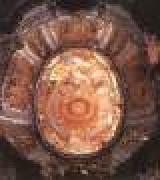 |
ASAM, Cosmas Damian
|
|
German Baroque Era Sculptor, 1686-1739
Bavarian architects and decorators. After studying in Rome (1711 ?C 13), Cosmas Damian became a prolific fresco painter, and his brother, Egid Quirin, became a sculptor and stuccoist. They developed the effects of dramatic lighting and illusionism originated by Gian Lorenzo Bernini and Andrea Pozzo. Working as a team, they produced magnificent illusionistic decoration in ecclesiastical buildings, combining dramatic lighting and colour. Their works are notable for their profound and dramatic intensity of religious feeling. The brothers became the principal late Baroque exponents of illusionist decoration in religious architecture. Their most notable collaboration is the church of St. John Nepomuk in Munich (1733 ?C 46) ?? known as the Asamkirche in honour of the brothers.
|
|
 |
Ary de Vois
|
|
was a Dutch Golden Age painter.
Ary de Vois was the son of Alewijn de Vois from Utrecht, who was organist in the Pieterskerk, Leiden, in 1635. Ary became a pupil in Utrecht of Nikolaus Knepfer, who also taught Jan Steen. Ary then returned to Leiden to study with Abraham van den Tempel, who lived there between 1648 and 1660. De Vois joined the Leiden Guild of St Luke on 16 October 1653, paying dues until 1677. He was dean in 1662-64, headman in 1664-65 and dean again from 1667-68. He married Maria van der Vecht, on 5 February 1656.
According to Houbraken his marriage caused a lull in his production, especially when he moved to Warmond where he took up fishing as a hobby. He had to move back to Leiden in order to keep his production levels high
|
|
|
|
|
|
|
|
|
|
|
| Wholesale China Oil Painting Wholesale Oil Painting China Xiamen Portrait Reproduction on canvas Chinese Oil Painting Wholesale USA Oil Painting |
|
|
|
|
|